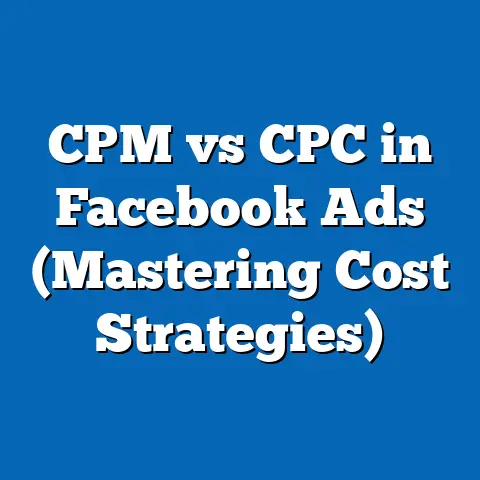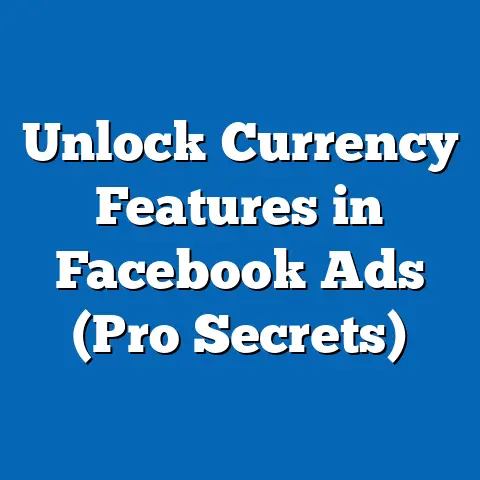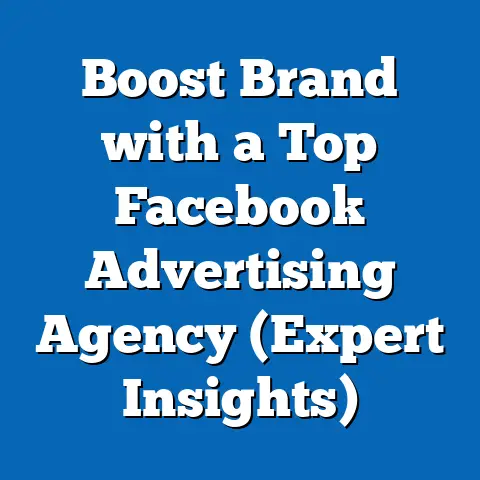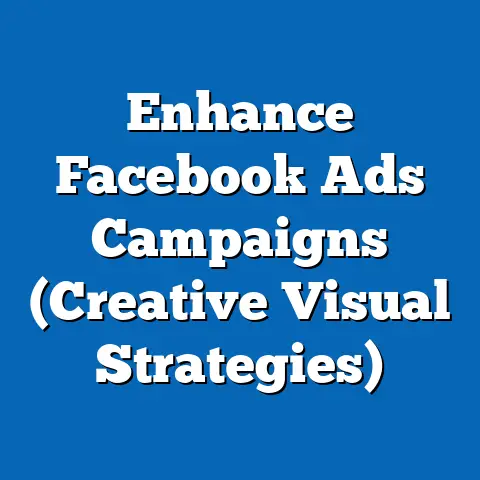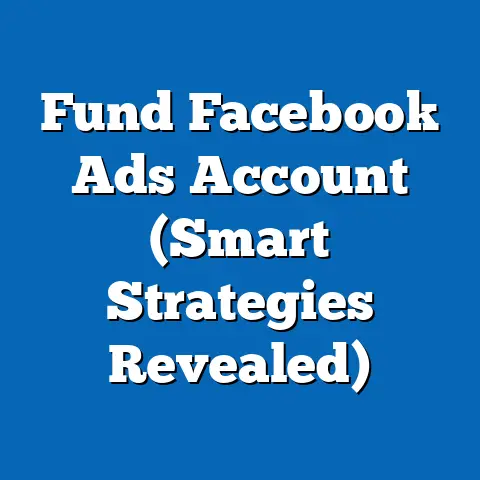Boost Sales with Shopify Facebook Ads (Pro Tips Inside)
In today’s world, where e-commerce is booming and environmental awareness is at an all-time high, businesses are constantly seeking innovative ways to reach consumers who care about the planet. I’ve seen firsthand how eco-conscious companies are increasingly turning to digital marketing strategies, and Facebook ads have become a powerful tool in their arsenal.
Shopify has emerged as a leading e-commerce platform, empowering businesses to scale their online presence. But simply having a great online store isn’t enough. That’s where Facebook ads come in, acting as a megaphone to amplify your reach and drive sales. This article aims to provide you with actionable tips to effectively use Facebook ads to boost sales for your Shopify store, especially if you’re focused on offering eco-friendly products. Let’s dive in and explore how you can leverage the power of Facebook to grow your eco-conscious business.
Understanding the Power of Facebook Ads in E-commerce
Facebook, with its billions of active users, is more than just a social media platform; it’s an advertising powerhouse. Its sophisticated targeting options allow you to reach specific demographics, interests, and behaviors, making it an ideal platform for Shopify merchants, especially those selling eco-friendly products. I remember when I first started running Facebook ads for a client selling sustainable clothing. We were able to target users interested in organic fashion, ethical consumption, and environmental activism. The results were astounding – a significant increase in website traffic and a surge in sales.
The potential reach of Facebook ads is enormous. You can connect with niche audiences who are actively seeking eco-friendly alternatives. According to recent statistics, consumers are increasingly willing to pay more for sustainable products. A study by Nielsen found that 73% of millennials are willing to pay extra for sustainable offerings. This presents a huge opportunity for eco-tech businesses to tap into this growing market through targeted Facebook ads.
Consider the success story of a company called “EcoLiving Solutions,” a Shopify store selling solar-powered gadgets. By running targeted Facebook ads highlighting the environmental benefits of their products, they saw a 300% increase in sales within just three months. This is just one example of how Facebook ads can be a game-changer for e-commerce businesses.
Key Takeaway: Facebook’s vast reach and precise targeting capabilities make it a crucial platform for e-commerce businesses looking to connect with specific audiences and drive sales.
Setting Up Your Shopify Store for Success
Before you start running Facebook ads, it’s essential to ensure your Shopify store is primed for success. Think of your store as the foundation upon which your advertising efforts will be built. If the foundation is weak, even the most brilliant ad campaigns will struggle to deliver results.
Essential Elements of a Successful Shopify Store
- Compelling Product Descriptions: Each product description should not only detail the features but also highlight the benefits, especially the environmental impact. For example, instead of just saying “Organic Cotton T-shirt,” say “This T-shirt is made from 100% organic cotton, reducing water consumption and pesticide use, contributing to a healthier planet.”
- High-Quality Images: Visuals are crucial in e-commerce. Use professional, high-resolution images that showcase your products in the best light. Consider including images that highlight the sustainable aspects of your products, such as close-ups of eco-friendly materials or photos of your products in natural settings.
- SEO Optimization: Optimize your product listings and store content for search engines. Use relevant keywords that your target audience is likely to search for. This will not only improve your organic search ranking but also enhance the relevance of your Facebook ads.
Integrating Your Shopify Store with Facebook
- Facebook Shop: Setting up a Facebook Shop allows customers to browse and purchase your products directly from Facebook. This seamless integration can significantly improve conversion rates.
- Facebook Pixel: The Facebook Pixel is a small piece of code that you install on your website to track conversions, optimize ads, and build targeted audiences. It’s an invaluable tool for understanding how your ads are performing and making data-driven decisions. I remember working with a client who initially hesitated to install the Facebook Pixel. Once they did, they were amazed at the level of detail they could track – from website visits to add-to-carts and completed purchases.
Key Takeaway: A well-optimized Shopify store is crucial for maximizing the effectiveness of your Facebook ad campaigns. Focus on compelling product descriptions, high-quality images, and seamless integration with Facebook.
Crafting Compelling Facebook Ads
Creating effective Facebook ads is an art and a science. It’s about understanding what resonates with your target audience and crafting ads that capture their attention and compel them to take action.
Elements of Effective Facebook Ads
- Headlines: Your headline is the first thing people see, so make it count. Use strong, benefit-driven headlines that grab attention. For example, instead of “Eco-Friendly Water Bottle,” try “Stay Hydrated and Save the Planet with Our Sustainable Water Bottle.”
- Visual Content: Use high-quality images or videos that showcase your products in an appealing and engaging way. Visuals should be relevant to your target audience and reflect your brand’s values.
- Ad Copy: Your ad copy should tell a story and highlight the benefits of your products. Focus on how your products can help customers live more sustainably and make a positive impact on the environment.
- Calls-to-Action (CTAs): Use clear and compelling CTAs that tell people what you want them to do. Examples include “Shop Now,” “Learn More,” “Get Started,” and “Join Us.”
The Power of Storytelling
Storytelling is a powerful tool for connecting with consumers on an emotional level. Eco-tech businesses can leverage storytelling to highlight the environmental benefits of their products and inspire customers to make a difference. I once worked with a company that sold reusable beeswax food wraps. Their Facebook ads told the story of how their wraps were helping families reduce plastic waste and create a healthier environment. This resonated deeply with their target audience and led to a significant increase in sales.
Examples of Successful Ad Campaigns
- Patagonia: Known for its commitment to sustainability, Patagonia uses Facebook ads to promote its eco-friendly clothing and environmental initiatives. Their ads often feature stunning visuals of nature and highlight the company’s efforts to reduce its environmental impact.
- Allbirds: This sustainable shoe brand uses Facebook ads to showcase its innovative materials and eco-friendly manufacturing processes. Their ads often highlight the comfort and style of their shoes, as well as their commitment to sustainability.
Key Takeaway: Crafting compelling Facebook ads involves creating engaging headlines, using high-quality visuals, telling a compelling story, and using clear calls-to-action.
Targeting the Right Audience
One of the biggest advantages of Facebook advertising is its advanced targeting options. You can target specific demographics, interests, and behaviors to reach the people who are most likely to be interested in your products.
Identifying Your Target Audience
- Demographics: Target people based on age, gender, location, education, and other demographic factors.
- Interests: Target people based on their interests, such as environmentalism, sustainable living, organic food, and renewable energy.
- Behaviors: Target people based on their online behavior, such as their purchasing habits, website visits, and engagement with environmental causes.
Leveraging Lookalike Audiences
Lookalike audiences are one of the most powerful targeting tools on Facebook. You can create a lookalike audience based on your existing customers, website visitors, or email subscribers. Facebook will then identify people who share similar characteristics and interests, allowing you to reach a wider audience of potential customers. I’ve seen lookalike audiences consistently outperform other targeting methods, especially when based on high-value customers.
Using Facebook Insights
Facebook Insights provides valuable data about your audience, including their demographics, interests, and behaviors. Use this data to refine your targeting and improve ad performance. For example, if you find that a particular age group is more responsive to your ads, you can adjust your targeting to focus on that group.
Key Takeaway: Effective audience targeting is crucial for maximizing the ROI of your Facebook ad campaigns. Use Facebook’s advanced targeting options and leverage lookalike audiences to reach the people who are most likely to be interested in your products.
Budgeting and Bidding Strategies
Setting the right budget and choosing the right bidding strategy are essential for maximizing the effectiveness of your Facebook ad campaigns.
Setting Your Advertising Budget
- Start Small: Begin with a small budget and gradually increase it as you see positive results. This allows you to test different ad creatives and targeting options without risking a large amount of money.
- Consider Your Goals: Your budget should be aligned with your campaign goals. If you’re looking to drive brand awareness, you may need a larger budget than if you’re simply trying to generate leads.
- Monitor Your Performance: Regularly monitor your campaign performance and adjust your budget accordingly. If you’re seeing a strong return on investment, you may want to increase your budget to reach a wider audience.
Choosing the Right Bidding Strategy
- Cost Per Click (CPC): You pay each time someone clicks on your ad. This is a good option if you’re focused on driving traffic to your website.
- Cost Per Mille (CPM): You pay for every 1,000 impressions your ad receives. This is a good option if you’re focused on brand awareness.
- Cost Per Acquisition (CPA): You pay each time someone completes a desired action, such as making a purchase or signing up for a newsletter. This is a good option if you’re focused on driving conversions.
A/B Testing Ad Creatives and Audiences
A/B testing involves creating multiple versions of your ads and testing them against each other to see which performs best. This can help you optimize your ad creatives and targeting options and improve your overall campaign performance. I always recommend testing at least two different ad creatives and two different audiences to start.
Key Takeaway: Setting the right budget and choosing the right bidding strategy are crucial for maximizing the ROI of your Facebook ad campaigns. Start small, consider your goals, and continuously optimize your spending based on performance data.
Measuring Success and Analyzing Data
Measuring the success of your Facebook ad campaigns and analyzing the data is essential for making data-driven decisions and continuously improving your performance.
Key Metrics to Track
- Click-Through Rate (CTR): The percentage of people who click on your ad after seeing it. A high CTR indicates that your ad is relevant and engaging to your target audience.
- Conversion Rate: The percentage of people who complete a desired action (such as making a purchase or signing up for a newsletter) after clicking on your ad. A high conversion rate indicates that your ad is effectively driving results.
- Return on Ad Spend (ROAS): The amount of revenue you generate for every dollar you spend on advertising. A high ROAS indicates that your ad campaigns are profitable.
Using Facebook Ads Manager
Facebook Ads Manager provides a wealth of data about your campaign performance. Use this data to analyze your results and make data-driven decisions. You can track key metrics, such as CTR, conversion rate, and ROAS, and see how your ads are performing over time.
Continuous Optimization
Continuous optimization is essential for maximizing the effectiveness of your Facebook ad campaigns. Regularly analyze your data, identify areas for improvement, and make adjustments to your ad creatives, targeting options, and bidding strategies. I’ve found that even small tweaks can make a big difference in campaign performance.
Key Takeaway: Measuring the success of your Facebook ad campaigns and analyzing the data is essential for making data-driven decisions and continuously improving your performance.
Conclusion
In conclusion, Facebook ads can be a powerful tool for boosting sales for your Shopify store, especially if you’re focused on offering eco-friendly products. By understanding the power of Facebook as an advertising platform, setting up your Shopify store for success, crafting compelling ads, targeting the right audience, setting the right budget, and measuring your results, you can effectively leverage Facebook ads to grow your business. Remember, the key is to continuously optimize your campaigns based on data and adapt to the ever-changing landscape of Facebook advertising.
I encourage you to take action and implement the tips shared in this article to see tangible results in your sales. Start your Facebook ad campaign today and share your experiences and results in the comments section. Let’s work together to build a more sustainable future, one ad campaign at a time.

